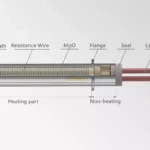Maintaining the exterior of your home is crucial for preserving its structural integrity and aesthetic appeal. Regular upkeep not only enhances curb appeal but also prevents damage that could lead to costly repairs. Effective maintenance involves a combination of routine cleaning, inspections, and timely repairs. This article outlines essential tips to keep your home’s exterior in optimal condition, ensuring it continues to protect and provide for your family while maintaining its value in the real estate market.
1. Regular Cleaning
The first step in maintaining your home’s exterior is regular cleaning. This involves washing the siding, windows, doors, and gutters to remove dirt, grime, and other debris that can accumulate over time. Use a pressure washer or a hose with a spraying attachment to clean the siding thoroughly. For windows, a solution of vinegar and water can be effective for leaving a streak-free finish. Cleaning not only keeps your home looking fresh but also prevents the buildup of substances that could potentially damage materials over time. Aim to clean the exterior of your home at least twice a year—once in the spring and once in the fall.
2. Inspect and Maintain Siding
Your home’s siding is its first line of defense against the elements and needs to be kept in good condition to perform its role effectively. Annual inspections are key to catching potential problems early, such as cracks, rot, or detachment. Working with professional siding contractors can be invaluable in this regard. They can assess the condition of your siding accurately and recommend the best course of action, whether it’s a simple repair or a complete replacement. This proactive approach ensures that minor issues don’t turn into major problems, potentially saving you money and extending the lifespan of your siding.
3. Gutter Maintenance
Ensuring that your gutters are free from leaves, twigs, and other debris is essential for them to function properly. Clean your gutters thoroughly in the spring and fall when debris tends to accumulate the most. Additionally, check for any signs of rust, holes, or separations in the gutters themselves. If water is not flowing freely or if there is visible damage, repairs or replacement may be necessary to prevent more extensive issues down the line.
4. Check Roofing
The roof is another critical component of your home’s exterior that requires regular inspection and maintenance. Look for missing, damaged, or aging shingles that may need to be replaced. Also, check for signs of leaking or water damage in your attic, as these can indicate problems with the roof’s integrity. After storms, especially those with high winds or heavy hail, perform a visual inspection to ensure no new damage has occurred. Engaging a professional roofer for an inspection every few years or after severe weather events can help catch issues that are not obvious to the untrained eye.
5. Window Care
Windows not only affect the look of your home but also its energy efficiency. Regular cleaning helps maintain clarity and brightness, enhancing the appearance of your home from both the inside and outside. Additionally, inspect the caulking and weather stripping around each window at least once a year. Look for cracks, gaps, or other signs of wear that could let in drafts or moisture. If you find issues, resealing the windows can improve insulation, reduce energy bills, and prevent water damage. Proper maintenance of windows extends their lifespan and improves your home’s overall energy efficiency.
6. Paint and Stain
Regularly updating the paint or stain on your home’s exterior not only enhances its appearance but also provides an additional layer of protection from the elements. Paint acts as a barrier against moisture, UV rays, and insects, all of which can cause significant damage over time. Check for chipping, cracking, or fading paint, and plan to repaint or touch up these areas every few years depending on the severity of wear and local climate conditions. When selecting paint or stain, opt for high-quality products that offer weather resistance and UV protection to ensure lasting durability and continued protection.
7. Landscaping
Effective landscaping is not just about aesthetics; it also plays a crucial role in protecting your home’s exterior. Trees and shrubs should be trimmed regularly to prevent them from scraping against siding or roofs, which can cause damage over time. Additionally, ensure that landscaping does not direct water towards the foundation of your home. Slope the terrain away from your house and consider adding drainage solutions like French drains if necessary to keep the foundation dry and intact. Well-maintained landscaping not only adds curb appeal but also protects your property.
8. Seal Cracks and Gaps
Sealing cracks and gaps in your home’s exterior is essential for preventing water damage and improving energy efficiency. Inspect the exterior of your home annually and seal any new cracks or gaps you find in the walls, foundation, around windows, and doors. Use appropriate caulking and sealants that are designed for exterior use and compatible with your home’s construction materials. This maintenance task is particularly important before the onset of winter or rainy seasons to prevent moisture from seeping into your home and causing mold or structural issues.
9. Pest Control
Regular inspections for signs of pest infestations are crucial to maintaining your home’s exterior. Pests like termites, carpenter ants, and rodents can cause significant damage if not addressed promptly. Look for signs of infestations, such as holes, nests, or droppings, and take action immediately if you suspect pests are present. Engage professional pest control services to treat and prevent infestations effectively. Preventative treatments can be particularly beneficial in maintaining your home pest-free in the long term.
10. Professional Inspections
While regular homeowner inspections are important, having your home inspected by a professional every few years can help identify issues that are not apparent to the untrained eye. These professionals can assess your roof, foundation, exterior walls, and other critical areas with greater accuracy. They can also offer expert advice on any necessary repairs or preventative measures to help ensure your home remains in top condition.
Conclusion: The home’s exterior
Maintaining your home’s exterior requires diligence and an understanding of the key elements that contribute to its longevity and appearance. By following these expert tips and addressing maintenance issues promptly, you can ensure that your home remains beautiful, efficient, and structurally sound for years to come. Regular upkeep not only saves money on potential repairs but also increases your home’s market value, making it a worthwhile investment in your comfort and financial future.







